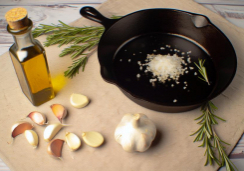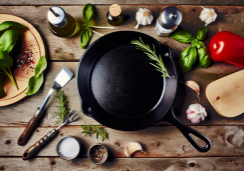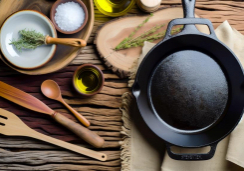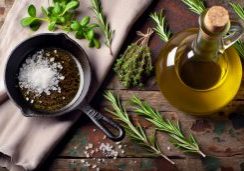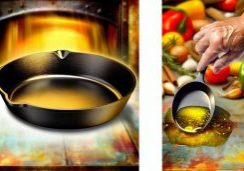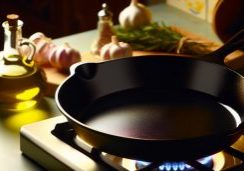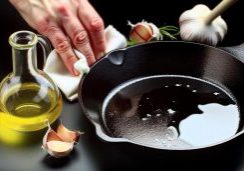What Makes a Perfect Sous Vide Steak?
As you embark on the culinary quest for the Holy Grail of steaks, you'll find that the path to a perfect sous vide steak is paved with precision and patience.
You need to select a cut that's rich with marbling and thick enough to stand up to the immersion in your water bath. Then, you'll need to season it just right—enough to complement the beef's natural flavors without overpowering them.
You're in control of the temperature, setting the stage for a steak that's cooked evenly from edge to edge, but how do you determine the ideal temperature and time to transform the raw meat into a masterpiece of tenderness and taste?
And once it's done, do you know the secrets to give it that final, flavor-sealing sear? Stick with me, and I'll show you how to elevate your steak game to professional heights, ensuring that every slice is a testament to your sous vide mastery.
Selecting Your Steak
When choosing your steak for sous vide cooking, opt for a thick, well-marbled cut such as ribeye or tenderloin to ensure a succulent and flavorful result. You're aiming for that melt-in-your-mouth experience, and cuts like the New York strip or tenderloin steaks are prime candidates that won't disappoint. They're revered for their rich marbling and consistent texture, perfect companions to the precision of sous vide.
But it's not just about the cut; the thickness of your steak is a pivotal factor. You'll want at least 1.5 inches, though 2 inches is ideal. This ensures your steak achieves the desired final internal temperature without overcooking at the edges. And remember, a perfectly cooked steak is a symphony of taste and texture, so freshness and quality are non-negotiable. Look for vibrant color, clear marbling, and a firm feel.
Before you lower your steak into the water bath, season it well. Salt, pepper, and your choice of aromatics can transform your sous vide steak recipe into a masterpiece. Consult temperature and timing charts to hit that sweet spot between rare and well-done, nailing down the best sous vide experience every time.
Seasoning and Bagging
Before immersing your steak in its warm water bath, generously season with salt, pepper, and your chosen aromatics, ensuring that every bite will be infused with flavor. The art of seasoning and bagging is crucial for a sous vide steak that's bursting with taste. Here's how you'll do it:
- Season Generously: Don't hold back on the salt and pepper. Spread it liberally over your steak to enhance the natural flavors. If you're feeling adventurous, add herbs like thyme or garlic for an extra layer of taste.
- Bag It Right: Place steak in bag, using a vacuum sealer to remove as much air as possible. If you don't have one, opt for the water displacement method by slowly lowering the sous vide bag into water, letting pressure push the air out before sealing.
- Skip the Fats: Although you might be tempted to add butter or oils, resist. These can interfere with the meat's texture and the distribution of seasoning. Instead, save the fats for finishing the steak post-sous vide.
Once you've nailed the seasoning and bagging, you're set for the sous vide process. Just remember to ensure the bag stays fully submerged to avoid any uneven cooking. Now, you're one step closer to steak perfection.
Precision in Temperature
Mastering the art of sous vide cooking hinges on your ability to maintain a precise temperature, ensuring that your steak reaches the pinnacle of perfection with every fiber cooked uniformly. When you set out to cook steak sous vide, you're committing to a process where exact temperature control is the star. Unlike traditional methods, the water bath used in sous vide cooking surrounds your steak with a consistent heat source, eliminating hot spots that can lead to over or undercooking.
Your Vide Steak Guide will emphasize the importance of precision. With sous vide cooking, you have the luxury of setting your desired temperature to the degree. This means you can achieve perfect results every time, whether you're aiming for a rare tenderness or a well-done richness. The precise temperature maintains the steak's natural juices and flavors, offering a dining experience that's as succulent as it's reliable.
Additionally, this meticulous temperature regulation grants you the flexibility to hold the steak at the exact temperature needed until you're ready to serve. This ensures that your meal isn't only cooked to your exacting standards but also ready on your schedule, providing the ultimate combination of quality and convenience.
Cooking Time Considerations
Having established the significance of precise temperatures, it's equally crucial to consider how long your steak bathes in its warm sous vide embrace to ensure each cut achieves its pinnacle of texture and flavor. The interplay between time and temperature in your sous vide cooker isn't just a matter of science; it's an art form in its own right.
To craft the ultimate sous vide steaks, here are key cooking time considerations:
- Thickness of the Cut: A thicker steak demands more time in the water bath to cook evenly. While a one-inch steak might reach perfection in an hour, a two-inch cut could bask for up to four hours to attain the same level of doneness.
- Marbling Matters: Steaks with rich marbling may need slight adjustments in time. The fat within these cuts can enhance flavor and tenderness, but it also changes how the heat distributes through the meat.
- Desired Texture: How long to sous vide your steak also depends on your preference for texture. A shorter cook will preserve some bite, while extended time can transform even a tough cut into buttery bliss.
What is the Connection Between Vacuum-Sealed Cooking and Sous Vide Steak Preparation?
Vacuum-sealed cooking retains flavors, ensuring sous vide steak preparation delivers succulent results. Immersed in a water bath at constant temperature, the vacuumsealed steak benefits from even cooking and exceptional juiciness, with the sealing process locking in the marinade and aroma, enhancing the culinary experience.
Finishing With a Sear
Once your steak has been precisely cooked sous vide, searing it in a hot skillet unlocks a world of caramelized flavor and enticing texture. The magic happens when you place your steak into a heavy cast iron skillet, preheated to a sizzling temperature. The high heat is crucial, creating that delectable crust that's the hallmark of a perfectly finished steak.
Before the steak kisses the skillet, make sure to pat it thoroughly dry with paper towels. Moisture is the enemy of a good sear, and ensuring your steak is dry will promote that sought-after Maillard reaction. Opt for a high-smoke-point oil like rice bran oil to coat your skillet; it withstands the high heat without burning, acting as the perfect medium for searing.
While a cast iron skillet is traditional, don't shy away from firing up the grill for those charred edges that only open flames can provide. For an extra touch of theater and flavor, use a torch to add a final char.
Once seared, let your steak rest. This pause allows the juices to redistribute, guaranteeing each bite is as tender and succulent as the last. Serve with your favorite accompaniments and savor the perfection of your sous vide masterpiece.
Conclusion
You've carefully selected your steak, seasoned it with just the right touch, and sealed it in a bag. Precise temperature control and perfect timing have done their magic.
Now, after that final sear, your steak is a culinary masterpiece: evenly cooked, bursting with flavor, and as tender as your expectations. Let it rest, then slice.
With every bite, you'll savor the expertise and care that went into crafting your impeccable sous vide steak. Bon appétit!

